The Non-Fiction shortlist is absolutely top class. We asked the finalists to pose a couple of questions to each other about their books. Read our comments about the books in all the categories here.
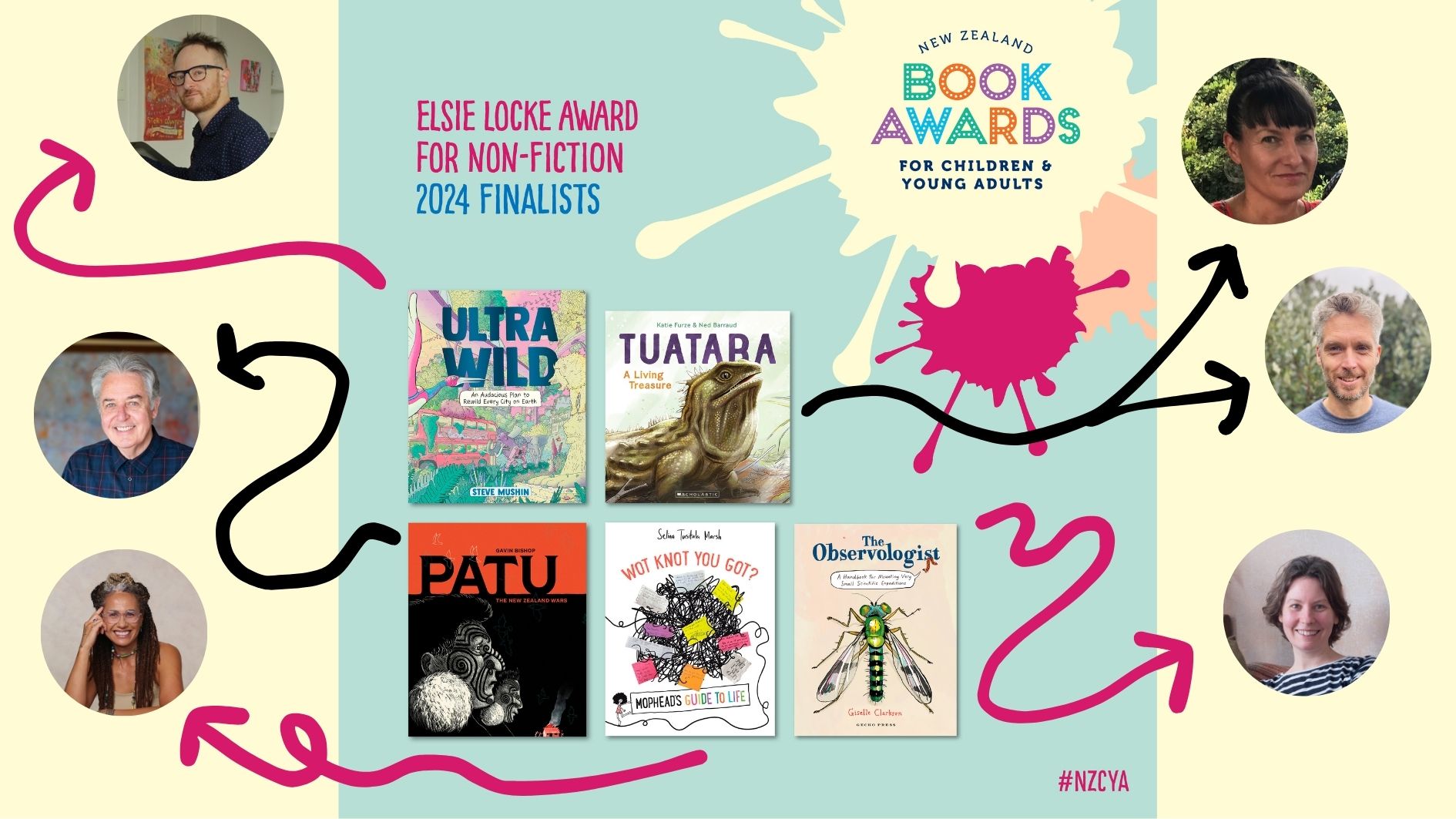
Selina Tusitala Marsh asks Gavin Bishop…
How do you think teaching New Zealand history in schools will help kids understand Māori culture better?
If New Zealand history is taught in a balanced way, unlike when I was at primary school in the 1950s, children will hear both sides of our stories. So far we have mainly heard how British settlers shaped this country. The names and stories of the tangata whenua, that clothed this land for hundreds of years, have been belittled and reduced beyond recognition. This desperately needs to change.
How has learning about your own Māori family history changed the way you write and illustrate books for children?
Learning about my whanau Māori has been a constant source of inspiration for my stories and pictures for all of my career. Because my Tainui grandfather was born in 1847 I never had the chance to talk with him and hear his stories about his time as a young man living at Port Waikato in the 1860s. I know only fragments of his life and very little about the lives of his 14 brothers and sisters.
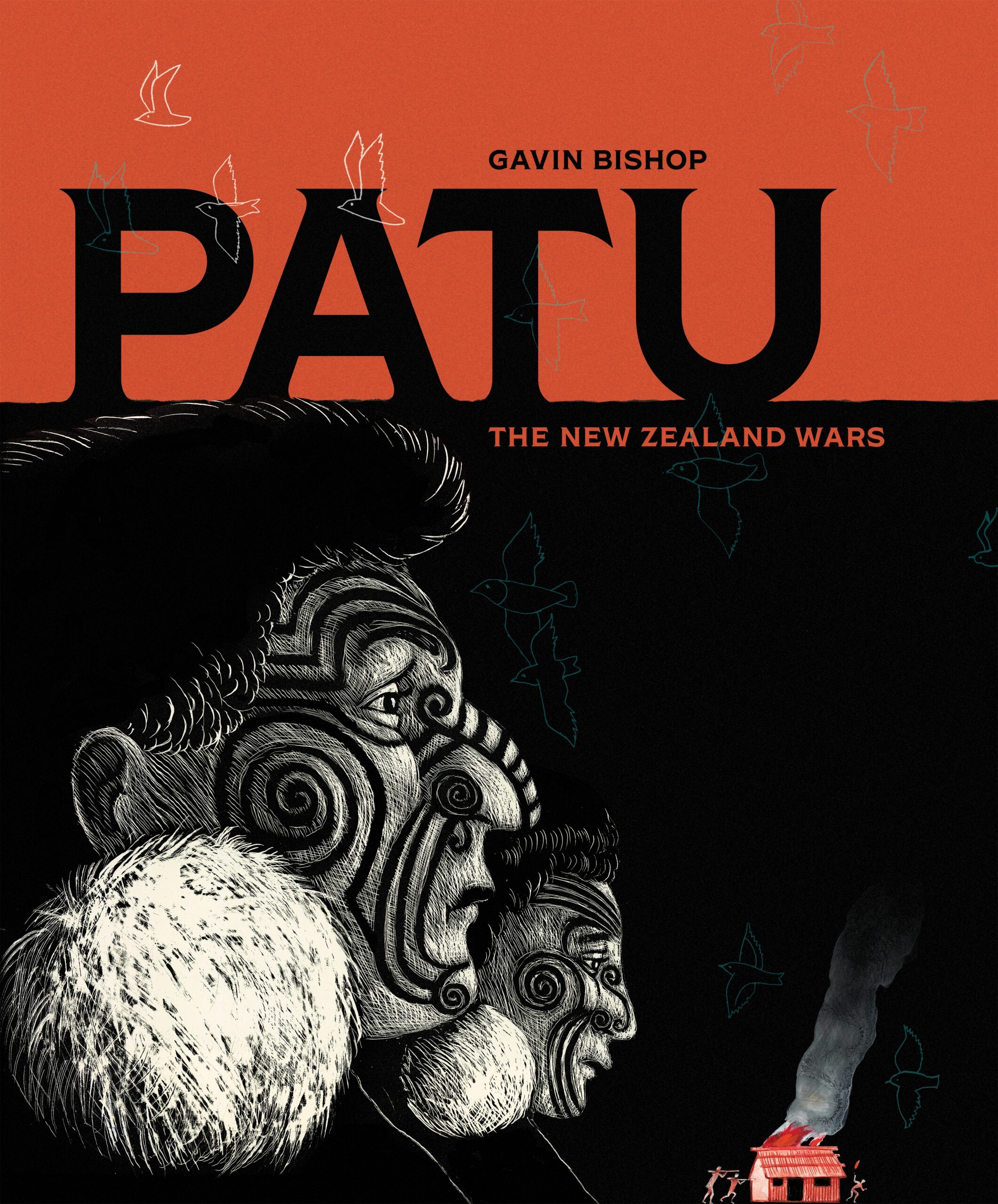
Read our review of Patu here, and an interview with Gavin Bishop about it here.
Gavin Bishop asks Giselle Clarkson…
How do you manage to make your illustrations look so fresh and hand-made when I suspect you use a computer to produce your artwork?
I am thrilled that you think that’s how they look, because it’s exactly what I try to do! Digital “brushes” are pretty amazing at replicating traditional media these days, but I spent a long time choosing and tweaking the tools to get the effect I was after. My general rule when I work in this loose style is that if a line or an expression—or even a whole illustration—doesn’t feel right, I do the whole thing over rather than adjusting it bit by bit. I might draw the same image six times before I’m happy with it, but each iteration will be started from scratch. And if my hand wobbles (perhaps from too much coffee early in the morning) and makes a happy little accident I’ll leave it in!
How did you decide what aspects of insect and grub life to include in your beautiful Observologist book?
It was important to me that I focused on species and behaviours that I had observed myself, and things I specifically remembered noticing when I was young. I wanted every child, no matter where they lived, to have personal access to as many of the species in The Observologist as possible. Maybe it’s because of my own impatience, but I wanted readers to read about lichen, or snails, or whatever, and then be able to immediately find and interact with that thing while their curiosity is at its peak—instant gratification and interactivity!
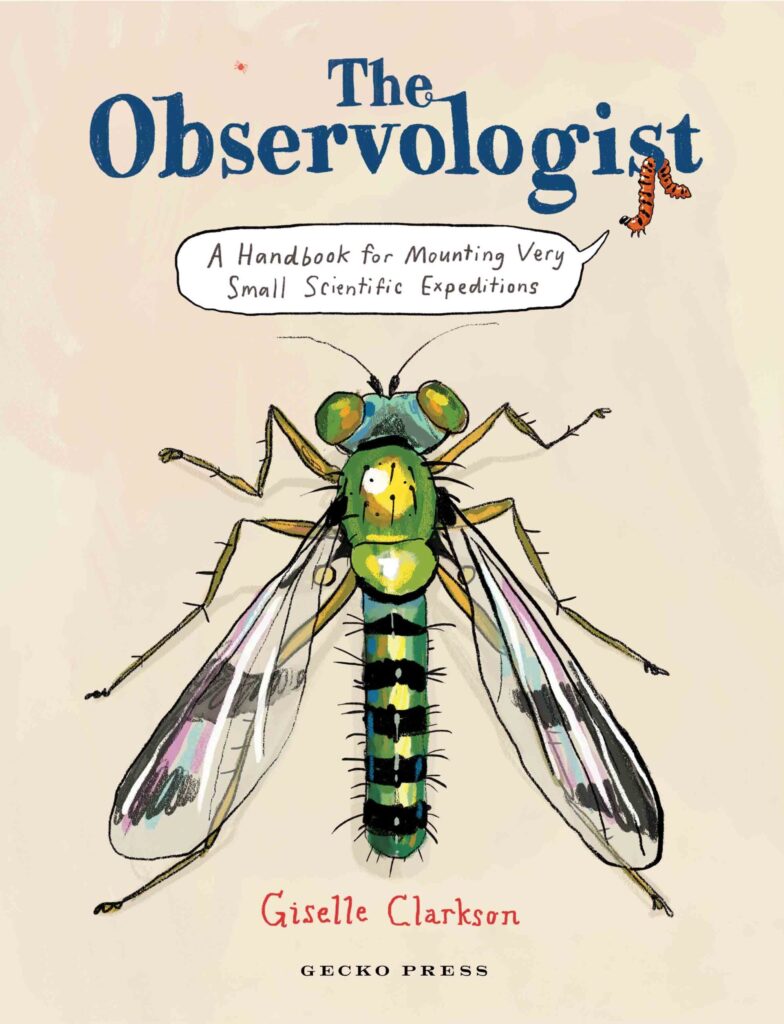
The Observologist: A Handbook for Mounting Very Small Scientific Expeditions
By Giselle Clarkson
Gecko Press
RRP: $39.99
Read our review of The Observologist here.
Giselle Clarkson asks Ned Barraud…
Tuatara are not exactly the most animated or expressive creatures, did you find that a challenge when bringing them to life in your illustrations?
Tuatara, like many other reptiles, are pretty sedentary. Then, they will suddenly leap into action! I enjoyed drawing tuatara transition from lazy, sleepy-eyed mode to frantic action mode. It wasn’t too hard to have them looking proud and majestic. They have a statuesque nature, like they’ve been carved from rock. Giving them a wee smile goes a long way. We know tuatara don’t smile; it’s purely anthropomorphic, but it does make them look cheeky!
Giselle Clarkson asks Katie Furze…
What was it that first sparked your interest in tuatara? Was it a personal experience with these marvellous reptiles? A particularly interesting article?
I’ve always been fascinated by tuatara, but I first considered writing a picture book about them a few years ago after reading an article in the newspaper. Tuatara made headlines all around the world when scientists from Otago University sequenced the genome. This research proved once and for all that tuatara belong to a completely separate group from all other living reptiles, and not only that but they diverged from their closest relatives (snakes and lizards) a whooping 250 million years ago—back in the Triassic period when dinosaurs roamed the earth. To me, this was just so mind blowing I knew straight away I wanted to write a picture book about tuatara!
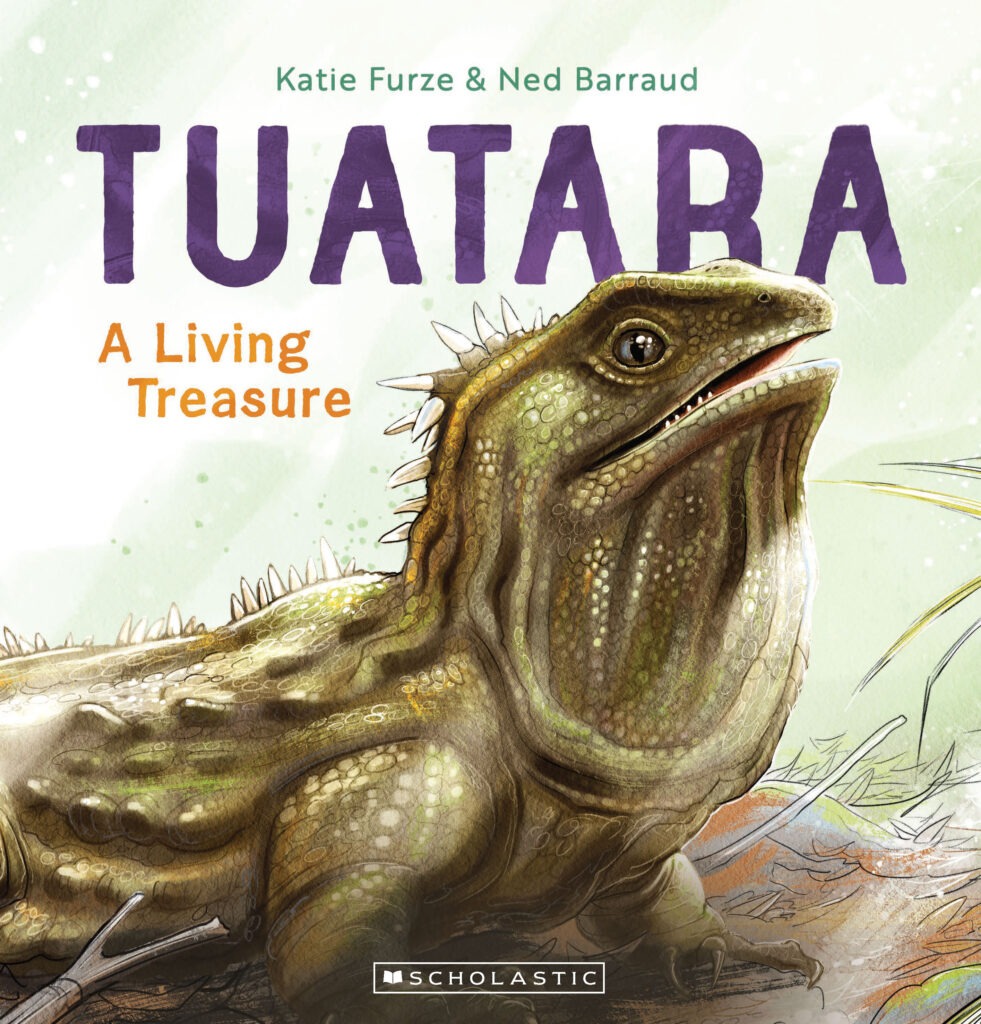
Tuatara: A Living Treasure
By Katie Furze
Illustrated by Ned Barraud
Scholastic NZ
RRP: $21.99
Read our review of Tuatara here.
Katie Furze asks Steve Mushin…
Your book is so inspiring! Can you share what you enjoyed most about creating it?
Thanks Katie! The best thing about creating Ultrawild was meeting with many different scientists and engineers to discuss my ideas. These chats were super fun and inspiring. And they always led to many more ultrawilding ideas.
Ned Barraud asks Steve Mushin…
This is a totally epic piece of work with so much information and detail! Did you have a clear idea of how this book was going to look from the beginning, or did it change a lot as it progressed? Was your publisher able to give you free rein, or did you have to change your vision at all? And if you had to pick one of your experimental ideas to be built, which would it be…?
Thanks Ned! From the start I had a very clear vision for the rewilding cities challenge, the sketchbook aesthetic, and design comedy narrative of Ultrawild. But the design projects within Ultrawild developed organically, as I attempted to solve the many complex, real-world-challenges of rewilding cities.
Luckily, my wonderful publisher Allen & Unwin was incredibly supportive of Ultrawild, right from the start. They generously gave me the freedom for the book to evolve over time—it doubled in length! And they were very understanding when it took many years longer than expected.
You won’t be surprised to hear that my collaborators and I plan to build every single idea in Ultrawild—to rewild cities as fast as possible. Join us!
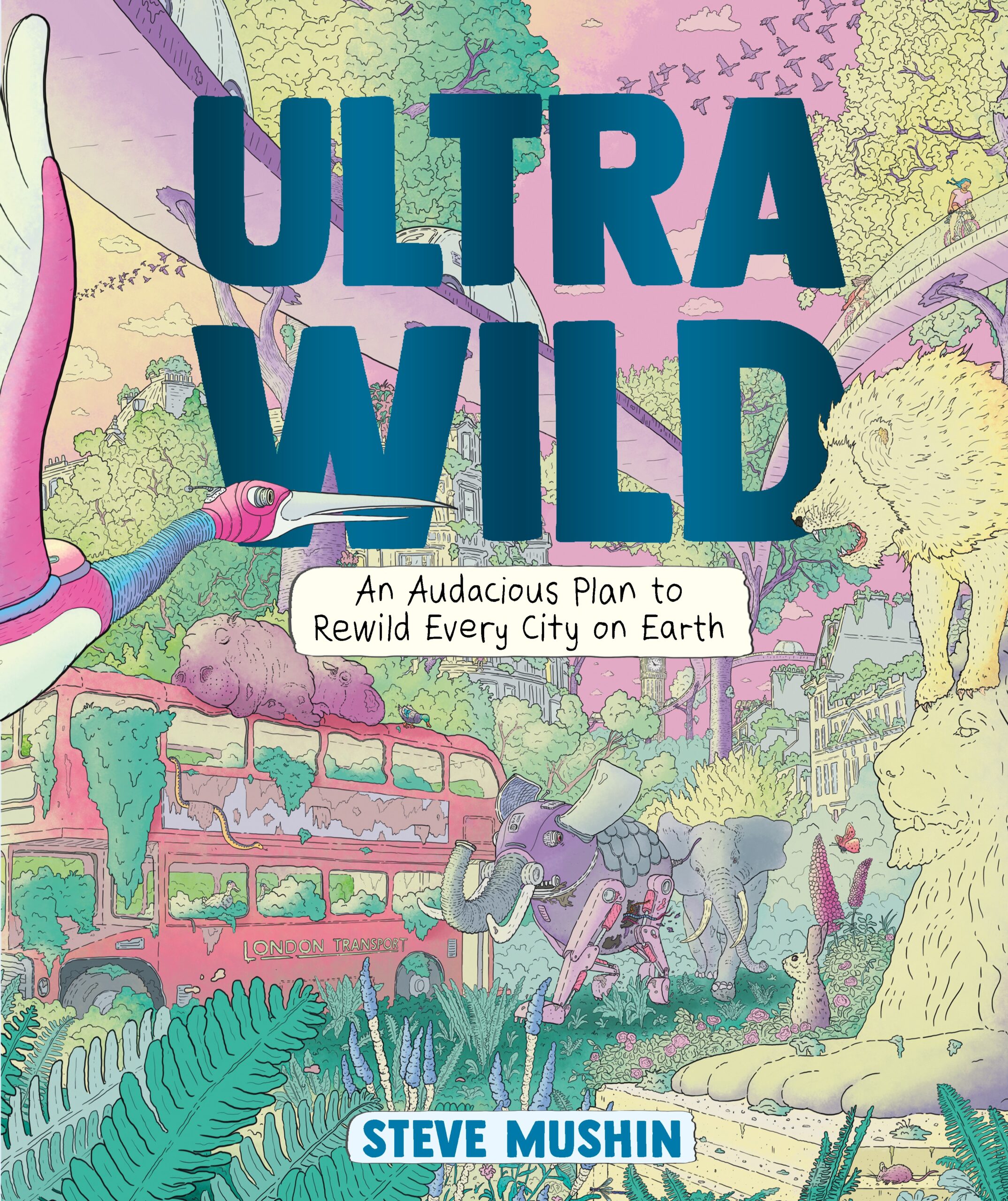
Ultrawild: An Audacious Plan to Rewild Every City on Earth
By Steve Mushin
Allen & Unwin
RRP: $37.99
Read our review of Ultrawild here.
Steve Mushin asks Selina Tusitala Marsh…
I feel like so many of my best ideas come from struggling with a knot. So I’d love to hear about a knot that you untangled in the making of Mophead which led to a creative breakthrough.
Creating Wot Knot You Got? challenged me to authentically present children’s struggles alongside my own marital issues without oversharing. The solution? Drawing my own “knot” and embracing the “less is more” principle. This allowed me to express my experiences cathartically while keeping the story general enough to represent anyone’s difficulties. By illustrating my knot and limiting specifics, I could be genuine about both the children’s and my challenges without compromising privacy.
In your book, I like how you describe creating narratives or poems by taking a page of text and inking out all but a few words. Have you ever done that with one of your OWN books—and discovered a hidden story within?
Black out poetry—working with existing text to resurface something new—is a favourite technique of mine. In fact, I do ‘black out’, or in Wot Knot You Got, ‘flush out’ a new line from my own work—see my Blocked-Loo KNOT: When your ideas are stuck. The story I worked with was one I co-authored with Pala Molisa, ‘Tekelmarae and The Boy Who Remembered’. I love the truthy line that surfaced through that exercise. Readers also get to have a go!
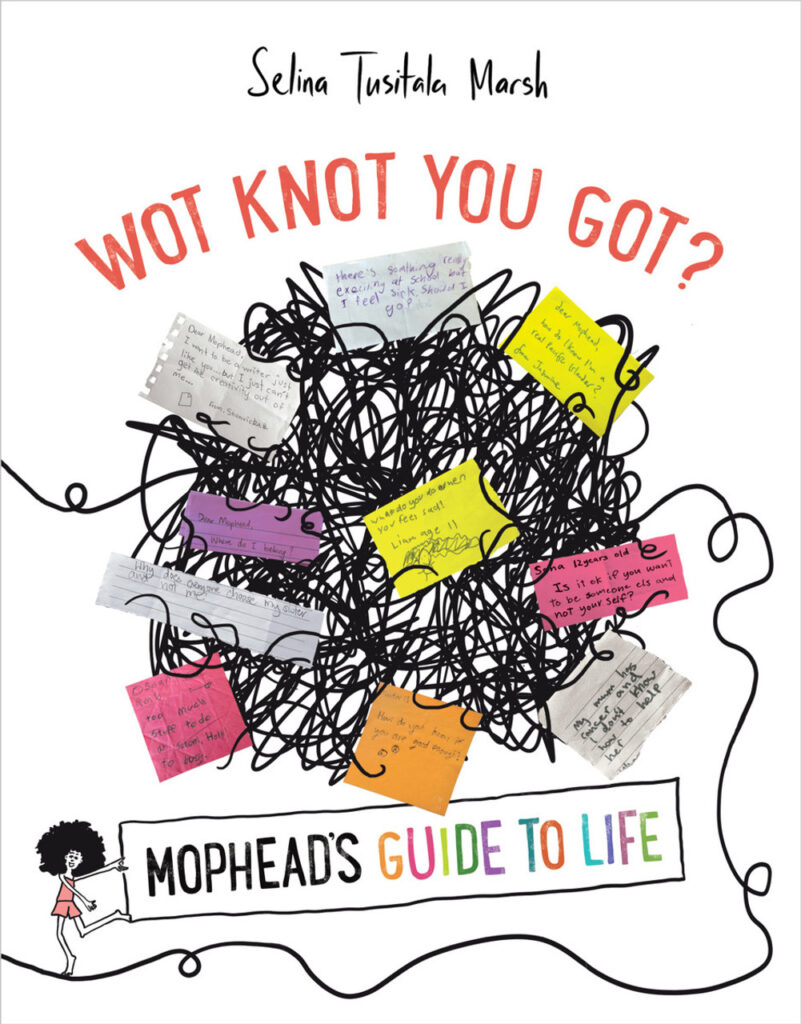
Wot Knot You Got: Mophead’s Guide to Life
By Selina Tusitala Marsh
Auckland University Press
RRP: $30.00



